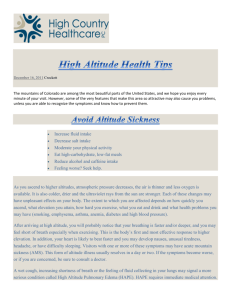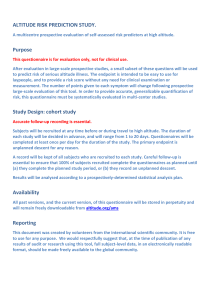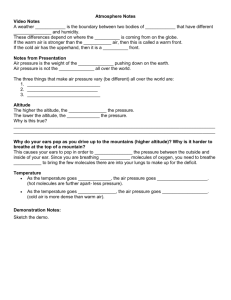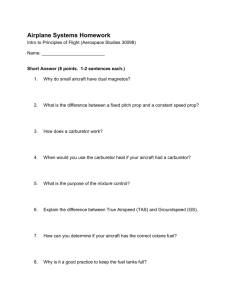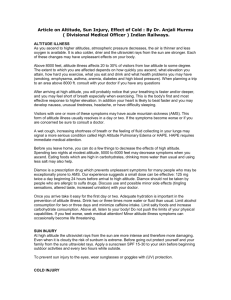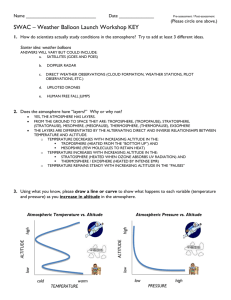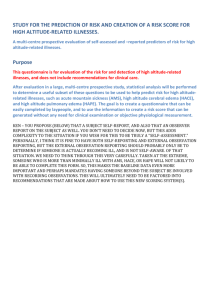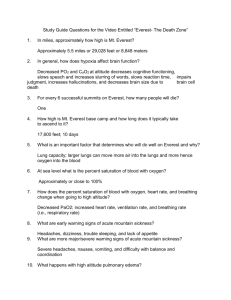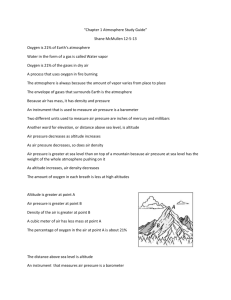Thriving and Surviving at High Altitude
advertisement
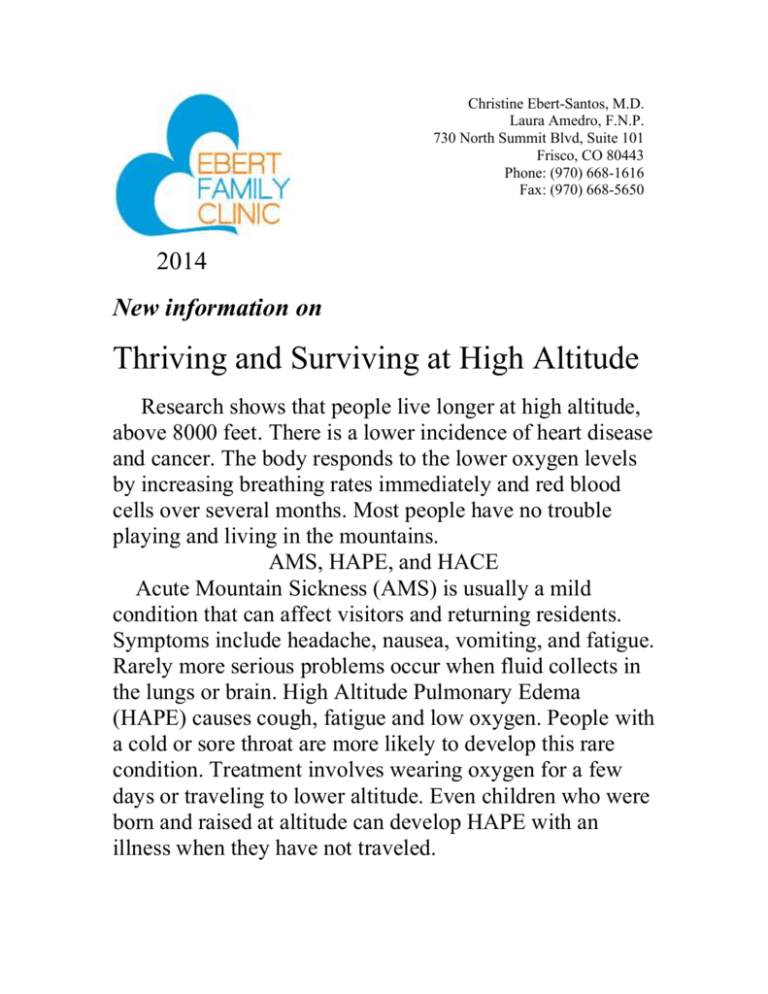
Christine Ebert-Santos, M.D. Laura Amedro, F.N.P. 730 North Summit Blvd, Suite 101 Frisco, CO 80443 Phone: (970) 668-1616 Fax: (970) 668-5650 2014 New information on Thriving and Surviving at High Altitude Research shows that people live longer at high altitude, above 8000 feet. There is a lower incidence of heart disease and cancer. The body responds to the lower oxygen levels by increasing breathing rates immediately and red blood cells over several months. Most people have no trouble playing and living in the mountains. AMS, HAPE, and HACE Acute Mountain Sickness (AMS) is usually a mild condition that can affect visitors and returning residents. Symptoms include headache, nausea, vomiting, and fatigue. Rarely more serious problems occur when fluid collects in the lungs or brain. High Altitude Pulmonary Edema (HAPE) causes cough, fatigue and low oxygen. People with a cold or sore throat are more likely to develop this rare condition. Treatment involves wearing oxygen for a few days or traveling to lower altitude. Even children who were born and raised at altitude can develop HAPE with an illness when they have not traveled. High altitude cerebral edema is more serious with confusion, vomiting, headache and collapse. Immediate transfer to low altitude can be lifesaving. PREVENTION Many altitude problems can be prevented. Spending a night at an intermediate altitude, such as Denver, before arriving above 8000 feet is widely recommended. A prescription drug, acetazolamide, stimulates respirations and can be given in low doses started two days before arrival and continued 2 days after. This medication is safe for everyone except pregnant women. Side effects are a tingling in the hands and feet and taste change for carbonated beverages. Many people do not sleep as well at high altitude. Sometimes this is due to decreased oxygen levels during the night. A simple test called night time oximetry can be done in the home to determine if oxygen therapy at night is warranted. Hypoventilation during sleep can also raise blood pressure. Both visitors and residents at high altitude with high blood pressure should consider asking their health care provider to order night time oximetry. Sleeping with oxygen is simple and comfortable. There may also be a prescription drug that can be taken to increase ventilation. There is a simple, inexpensive device to measure oxygen levels called a pulse oximeter. This can be purchased at Walgreens or Walmart or online. Knowing your oxygen level when you are feeling unwell or having a cough and congestion at altitude is very important. Your health care provider can order oxygen 24 hours a day when needed.


